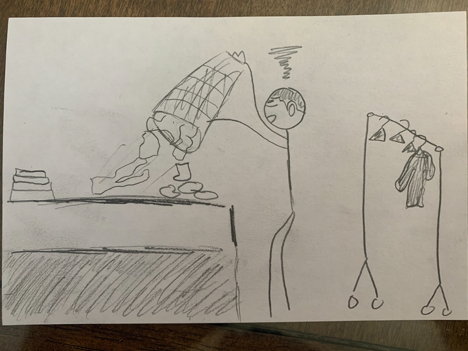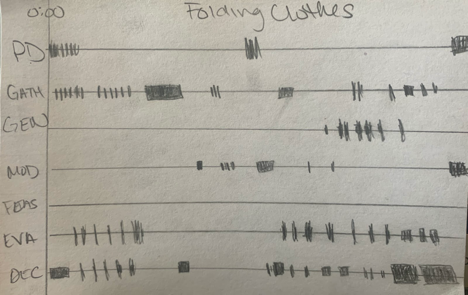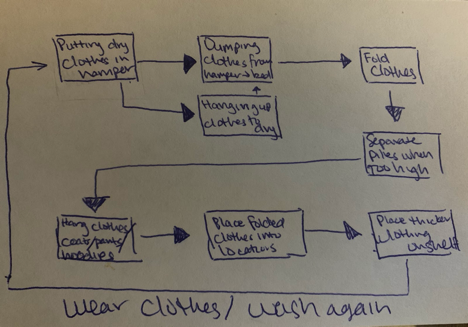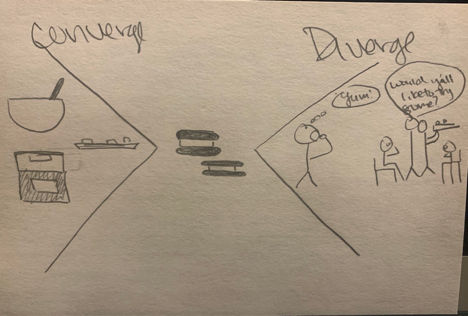Dear Design.
Developing design awareness by representing everyday design processes.
Throughout this research group, we explore the potential of learning about a set of design research findings through the concept of design awareness. We developed design awareness processes through the doing, documenting, representing, and reflecting on everyday design activities.
Overview
Inspired by the book, “Dear Data,” there is a design process to almost every task users conduct, whether they know it or not. We were asked to record our process of these tasks, small or big, and develop a visual representation to showcase to the group. With that, we reflected on our processes and internalized our habits, biases, and unique thoughts.
Duration
10 Weeks
Team Members/Roles
Cindy Atman (Professor)
Kathryn Shroyer (Graduate Student)
Khyree Watson (Design Researcher)
Design Challenge
Many of the tasks and activities we perform have a design to it, whether it is washing dishes or reorganizing one’s room. Finding out where you are in the design while you’re in it is the challenge, as well as being able to make thoughtful and informed decisions for the next steps.
Questions for thought.
After completing each weekly design, I would consider these three questions and reflect on my process of everyday design.
Why did you choose the design process you chose to document?
Did you consider other ideas? If so, what were they?
What was notable for you about your process of turning your memory into a representation of the design process?

Visual representation of thinking about the design process of reorganizing the refrigerator.

Beginning of the design process of folding clothes

Converge to Diverge representation of folding clothes

Coding method of folding clothes

Sequential method of folding clothes

Converge to Diverge visual of making Oreos
Reflection.
In such a fast paced world where the goal is to reach the final destination, this research group highlighted the importance of the journey to reach that final destination. I was able to appreciate the process of doing everyday tasks such as folding clothes or washing dishes, things that we may take for granted. Also, I was able to realize some of my tendencies and habits as a person and as a designer. Reflecting on such aspects of myself has implemented a space of constant awareness and being present in many aspects of life. Especially in the process of design work, where those tendencies and consistent decisions are in full effect.
I must thank Cindy Atman & Kathryn Shroyer for making this research group possible. From their insight and lessons, I have gained the importance of slowing down and being present and appreciative of all things design, which is everywhere.
